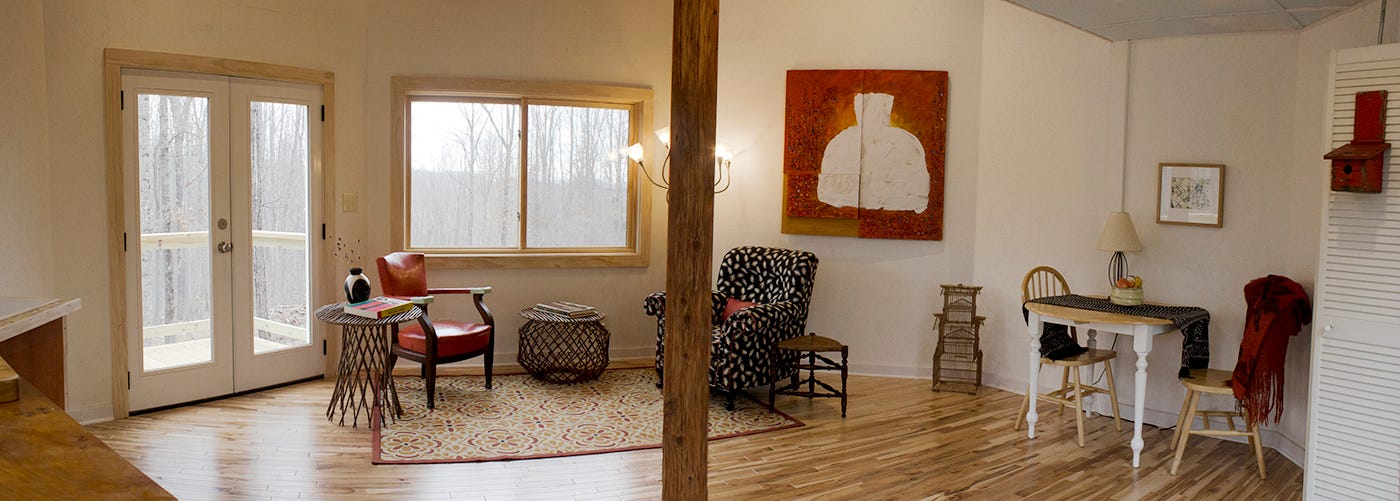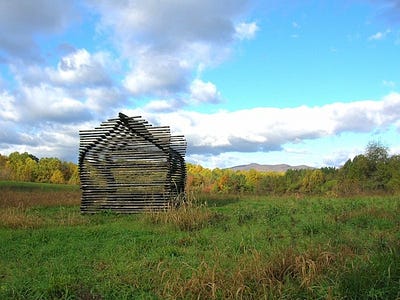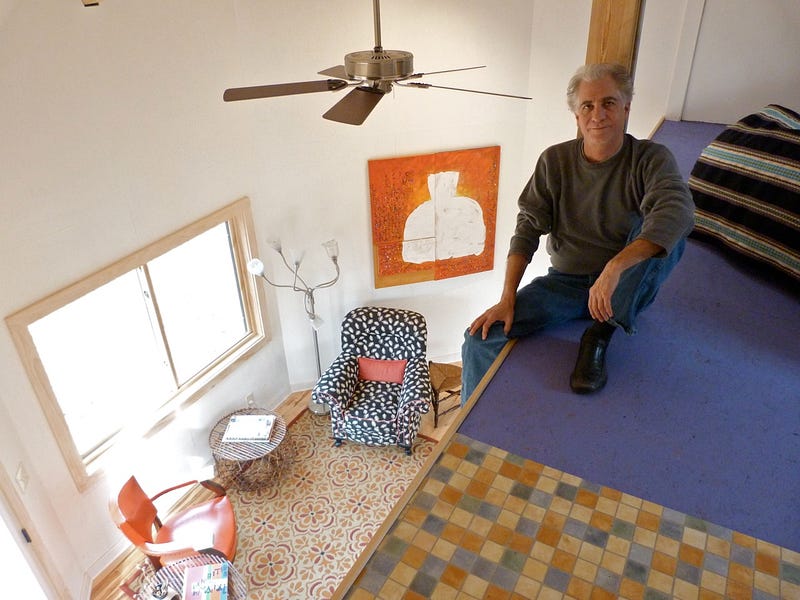Little House on the Prairie (or Wherever You Want it to Go)

Little House on the Prairie (Or Wherever You Want It to Go)
Didn’t save enough to retire—ever? Go small.
Say, for the sake of argument, that you live in New Jersey, pay $19,000 a year in property taxes, and have two children who have graduated college. You don’t need the fancy public school system anymore. You’re still working, but you’re wondering if maybe you’d be better off not working — and moving instead to some other, possibly warmer, definitely less expensive part of the country.
Quit the rat race, downsize, and live out the rest of your life—or at least the next chapter of your life—intentionally and in a place of your own choosing.
That hypothetical person would be me and it’s something I’ve been babbling about for the past couple of years. I babbled about it at a party filled with Reuters editors last fall, and learned that all those paragraphs of exposition could be boiled down to three words: real estate arbitrage. Sell a property whose price is inflated due to its location, and move somewhere cheap. It’s basically what Anne-Marie Nolin wrote about in her popular Midcentury/Modern essay Choosing Maine.
Well here’s something that could make that real estate arbitrage dream super simple: Sell the big house, buy an undeveloped lot somewhere and then order a 450-square foot octagonal house kit from Virginia artist Craig Pleasants for $34,000. All in—land, kit and contractor—you could theoretically quit the rat race for as little as $100,000.

The Not So Big House, first published by Sarah Susanka in 1998, took aim at the McMansions that had begun proliferating in American suburbs, and argued that for the same money people were spending on castles, they could hire an architect and design houses that were not only cozier, but tailored to their own specific needs.
The Tiny House Movement takes that idea to its radical extreme. Chances are pretty good that you’ve seen this New York Times story about Dee Williams, shared relentlessly on Facebook last year. Williams pared her life down to 305 objects and lives in an 84-square foot house in a friend’s back yard in Olympia, Washington. She built it after taking a trip to Guatemala, which made her realize how much of her time back home was spent in household chores. Having a heart attack sealed the deal. She didn’t want to spend whatever remaining time she had on earth, as the New York Times put it, “cleaning the gutters.”
But you don’t have to travel to Guatemala to decide to live in a tiny house. They’re now being suggested—by financial experts—as a possible answer for boomers who haven’t saved enough for retirement.
Not surprisingly, according to The Tiny Life, a website dedicated to the movement, two out of five tiny tiny home owners are over 50.
Pleasants’ octagonal house—five times the size of Dee Williams’ homestead—is practically a mansion in comparison. But it’s cut from the same philosophical cloth. In 1981, Craig and his wife Sheila built—and lived in—a house much like the one he’s selling kits for now. “We were were interested in the whole back-to-the-land idea. Part of the hippie ethos. Small is beautiful,” he says.
In the mid-1980’s, Craig and Sheila lived in New York City, where a friend was running a mission on the Lower East Side. “I had a lot of contact with the homeless community,” Craig says. That ultimately led to his interest in vernacular building styles, or “building done by a lay person.”
“I began to look at the way other cultures produced their housing, often without architects and without builders,” he says.

Craig Pleasants’ work has long straddled the worlds of architecture and sculpture, and in fact the site where the kits can be ordered is called SculptorHouse. I met Craig Pleasants at the Virginia Center for the Creative Arts in Amherst, Va., where he and Sheila both lived and worked for many years. (Sheila remains director of artists’ services.) Over my many visits to VCCA as a writer, I’d happen on Craig’s various sculptures while taking walks. To be honest, I didn’t even know what they were. They almost seemed Stonehenge-like, outcroppings of a distant civilization.
I’ll admit that knowing the artist who designed the “octagonal living unit” makes the whole idea seem less crazy. There are plenty of other tiny homes on the market, like these 117- to 180-square foot homes made by Tumbleweed. There are dreamers and visionaries the world over. I don’t know a lot of them.
The funny thing is, even knowing Craig, the idea didn’t really resonate with me in 2011, when he tried, unsuccessfully, to raise funds for the project on Kickstarter. In the four years since, though, while Craig managed to eke together enough money to build the prototype himself, the idea of downsizing and moving also took root in me. So when Sheila recently posted a newspaper story about his house kits on Facebook, and I saw photos of the interior—open, airy, filled with light—I was blown away.

So what is this dream made of, really?
The panels are constructed from steel and polystyrene by a manufacturer in Radford, Va. They’re light—and strong. Pleasants says a house in Guam, built out of the material, survived a 200 MPH typhoon. And the house is small and tight enough that, in central Virginia, he heats his with a single oil-filled radiator. The bedroom and the bathroom are located in the loft.
If you ordered one today, it would take about six weeks for the manufacturer in Radford to fabricate it. Then, it would take two fairly handy people about 300 hours to assemble the thing. If you didn’t have two fairly handy people, you could call in a contractor.
Of course it would take me longer than that to get rid of the possessions I’ve accumulated in my house the past 25 years.
And that, really, is the big question. As much as I see the futility of the treadmill that is living and working within 15 miles of a world-class city, could I actually pare down my life to 305 objects and drive away? Equally important, could I convince my husband?
Tiny house. Huge stakes.
To be determined.
